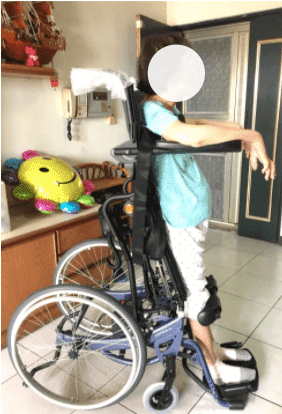If you haven’t already, make sure you go back and read the first blog “How to Choose a Standing Wheelchair” where we talk about the different types of standing wheelchairs available to wheelchair users and their health benefits. In this blog, we will show you some real-life case studies of standing wheelchair users and how to fit a user to SME and Ergo Stand.
Case studies for standing wheelchairs
Case Study 1

Ms. X was diagnosed with ALS (Amyotrophic lateral sclerosis) and was looking for a wheelchair that could increase their independence at home as well as a wheelchair that would lessen the burden on the caregiver when they wanted to stand or reach objects on a high shelf.
SME (self propelled KARMA wheelchair with power standing function) was the solution for Ms. X as they were able to decrease the assistance they needed from their caregiver and they improved their standing endurance.
Case Study 2

Mr. Y’s diagnosis was a C3 spinal cord injury. C3 SCI wheelchair users typically have arm, hand, trunk, and leg paralysis and require 24-hour care. Mr. Y was suffering from prolonged pressure sores in the buttock area because of improper care and lack of pressure relief.
Mr. Y was able to operate Ergo Stand on their own which sped up their recovery and improved their overall personal mobility.
How to fit a user for SME standing wheelchair
The dimensions to remember when fitting a standing wheelchair are:
- Seat width
- Seat depth
- Leg Rest height
- Armrest height
- Knee support
- Chest support
How to fit a user to Ergo Stand KARMA standing wheelchair
Summary
Before getting a standing wheelchair, make sure that you have checked with your doctor or physiotherapist to make sure that this is a safe option for you. After you’ve done this you can contact your local dealer to try out one of KARMA’s standing wheelchairs.
Keep Reading

 Global
Global

